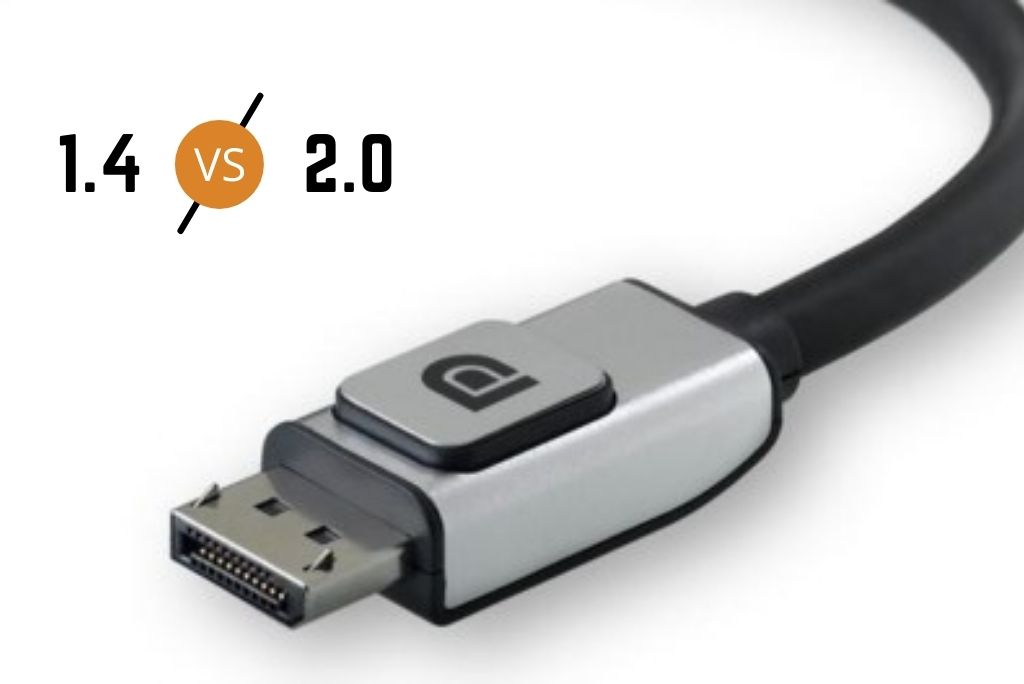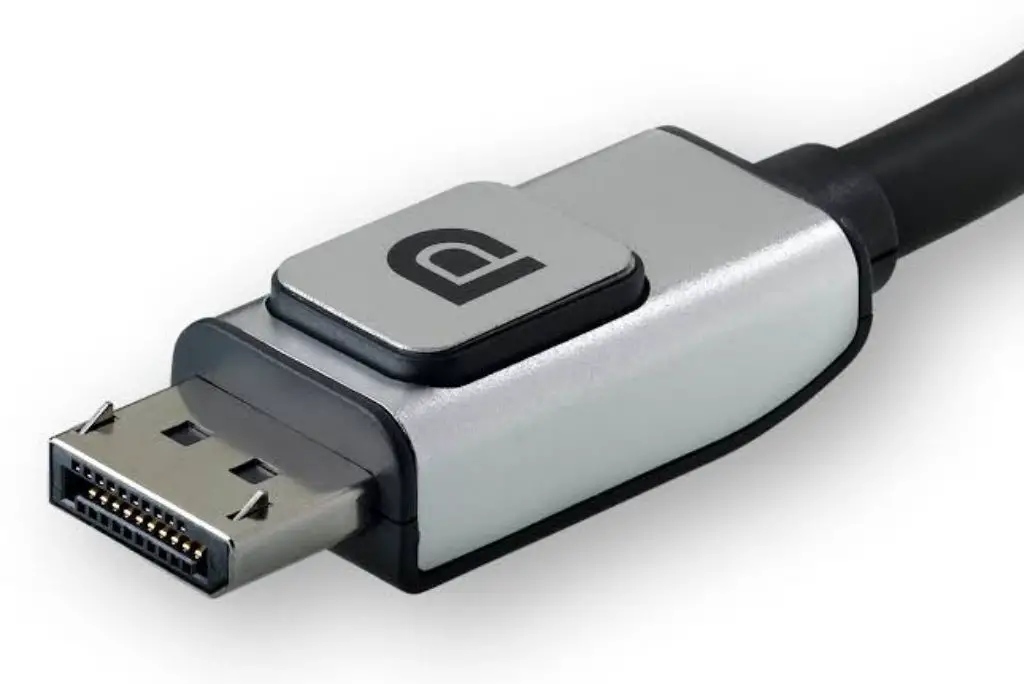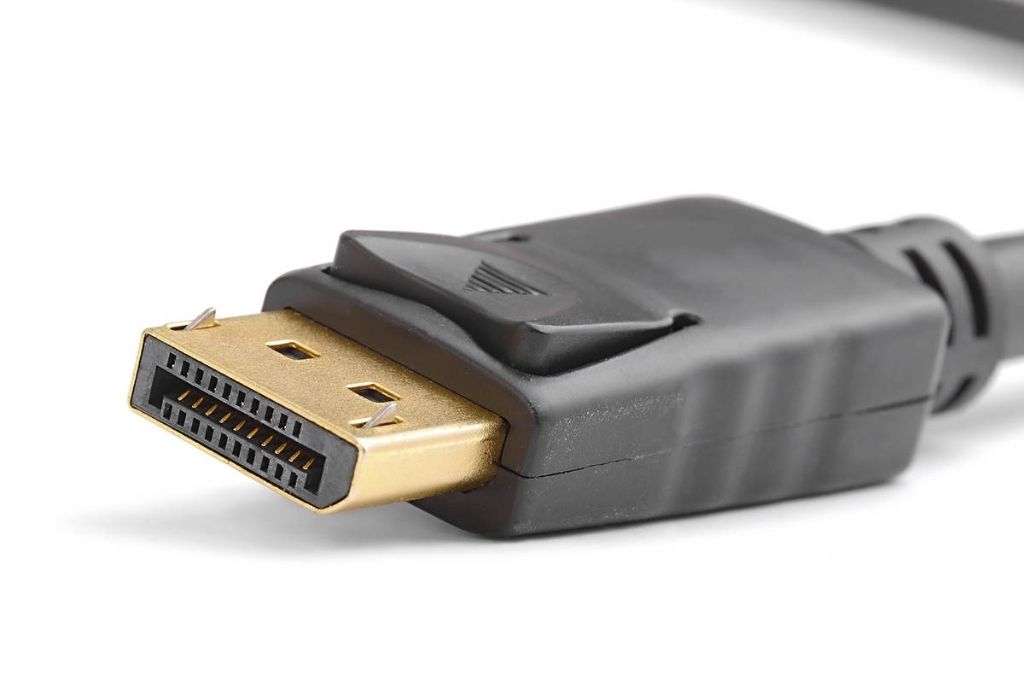VESA (Video Electronics Standards Association) released a new specification – DisplayPort 2.0, in 2019. This newer version provides great features.
This is the upgraded version of the previous DisplayPort 1.4. This DisplayPort 2.0 is much better than the 1.4.
The main differences between DisplayPort 1.4 and 2.0 are the features both two versions have. There are some upgrades on DP 2.0 from 1.4. So it is wise to say DisplayPort 2.0 is the latest version and has some advanced features from 1.4 or other versions. Here’re the quick features of both.
| Features | DisplayPort 1.4 | DisplayPort 2.0 |
|---|---|---|
| Max Resolution | 8k @ 60Hz | 16k @ 60Hz |
| Max Bandwidth | 32.4 Gbps | 80 Gbps |
| Max Bit Rate | 4Gbps | 10Gbps,13. 5Gbps and 20Gbps |
| Color Resolution | 4:2:0 & 4:2:2 | 4:4:4 |
Let’s review the post, know each spec of these two versions, and judge which one is better according to your needs.
DisplayPort 1.4 vs. DisplayPort 2.0 Specs Comparison
Here I’ve discussed the specification comparison between these two versions of DisplayPort. So let’s check now and decide which one is perfect for you:
1. Release Dates
# Release Date of DP 1.4
DisplayPort 1.4 was launched in 2016. So it is slightly outdated from modern Tech, so it can prove to be quite outdated for modern high-resolution games and stuff. But this can handle most of your games and work. It is also one of the popular versions.
# Release Date of DP 2.0
DP 2.0 was launched in 2019 with significant advanced and updated features that are greatly compatible with new and modern tech and PCs. So your modern gaming experience will be great with this version. People are now shifting to this version.
2. Resolutions
# Resolution of DP 1.4
The DisplayPort has a resolution of 8K, DSC 1.2 (Display Stream Compression), and HDR (High Dynamic Range). It can support a resolution of 8K in 60Hz and 4K in 120Hz frequencies. This produces enhanced resolution.
# Resolution of DP 2.0
According to the statements of VESA, this DisplayPort 2.0 is the first DisplayPort that can support up to 16K resolution at a refresh rate of 60Hz and a max of 30 bits per pixel. You can also enjoy a 10k resolution at 80Hz with that version.
People can also install and run two displays at 8k resolution and 120Hz. So if you have a dual monitor setup, it can be a great option.
You can also get a higher refresh rate if you decrease the resolution to 4k.
3. Bandwidths
# Bandwidth of DP 1.4
DisplayPort 1.4 supports a bandwidth of 32. 4Gbps maximum.
# Bandwidth of DP 2.0
The DP 2.0 can triple its bandwidth maximum up to 80Gbps.
4. Bit Rates
# Bit Rate of DP 1.4
This DisplayPort 1.4 transmits 8.1 Gbps over 4 lanes. The maximum bit rate is 4Gbps.
# Bit Rate of DP 2.0
Over the 4lanes, DisplayPort 2.0 has introduced three different bit rates of resolutions, each of them – 10Gbps, 13. 5Gbps and 20Gbps.
In this DisplayPort, VESA tried to introduce passive cables which support UBHR 10 (UBHR – Ultra High Bit Rate). This delivers a bit rate of 40Gbps.
5. Color Resolutions
# Color Resolution of DP 1.4
DisplayPort is the first port that has the DSC 1.2 version. This version supports 4:2:0 and 4:2:2 codes.
This doesn’t allow the pixels to be converted into RGB. This enhances the resolution by having compressed pixels. 16 bits per color is supported by Version 1.2. This gives us in-depth content.
# Color Resolution of DP 2.0
It also has a full-color resolution of 4:4:4. For HDR-10, it also provides 30 bits per pixel.
6. Power Savings
# Power Savings of DP 1.4
Forward error correction is also an important feature of DisplayPort 1.4. This doesn’t allow any errors to occur in the videos during transport. This allows power saving.
# Power Savings of DP 2.0
Panel Replay Feature also gets important in DP 2.0. This allows power saving in small operating machines or PCs with higher resolution.
7. Highlighted Features
# Highlighted Features of DP 1.4
* HDR meta transport is a noticeable feature of DisplayPort 1.4.
* Expanded audio transport over 32 channels and 1536Hz sample rates are important features of DisplayPort 1.4.
# Highlighted Features of DP 2.0
1) Single display resolution
* 16K display at 60Hz and 30bpp 4:4:4 HDR (and DSC)
* 10K display at 60Hz and 24bpp 4:4:4. (without compression)
2) Dual Display Resolution
* Two 8K displays at the rate of 120Hz and 30bpp 4:4:4 HDR (with DSC)
* Two 4K displays at the rate of 144Hz and 24bpp 4:4:4(without compression)
3) Triple Display Resolution
* Three 10K displays at the rate of 60Hz and 30bpp 4:4:4 HDR (with DSC)
* Three 4K displays at the rate of 90Hz and 30bpp 4:4:4 HDR(without compression)
This was all about the specifications of DisplayPort 1.4. It provides us with the best specs that attract users. You can also read DisplayPort 1.2 comparison with 1.4 to understand the whole thing better.
[amazon box=”B07J2PGGFX” description=”One of the Best DP 1.4 Cable”]
Are the Specifications of DisplayPort 2.0 up to Level?
- DisplayPort 2.0 is the only cable that meets all the requirements of the people. It has complete quality control over the cables.
- Advanced cable tester V2 supports a variety of cables, including HDMI and DisplayPort. This tester can even test DisplayPort 2.0. It can be used to test the standard level and quality of the cable. This tester tests the pins to test the continuity (openings or shorts). With Cable Tester V2, you can quickly and thoroughly check the cables. This device is designed to fit factory and line settings.
- This device enables us to know the level of each cable.
[amazon box=”B08Y8MM4KC” description=”One of the Best DP 2.0 Cable”]
These were some of the differences between the features of the two DisplayPorts – DisplayPort 1.4 and DisplayPort 2.0.
Both of them have their specs. But the newly launched DisplayPort 2.0 has more advanced features than the DisplayPort 1.4.
Sources
https://en.wikipedia.org/wiki/Video_Electronics_Standards_Association



